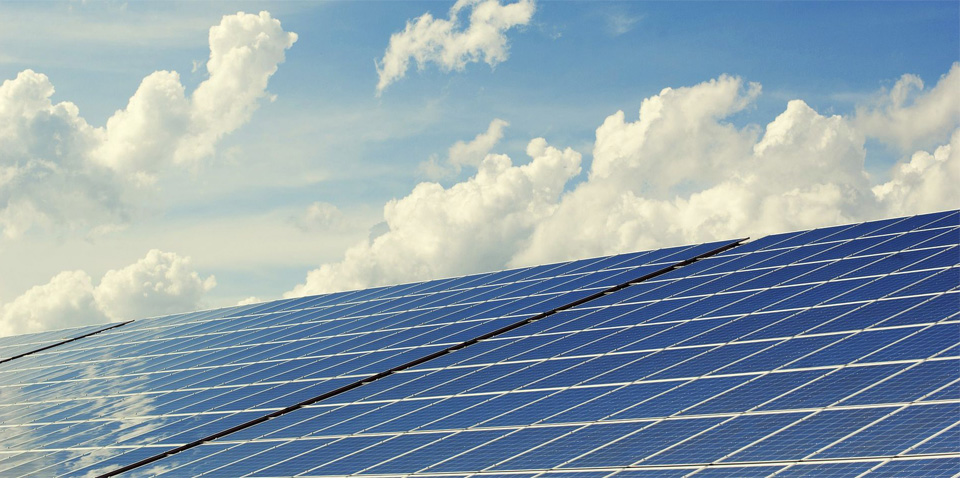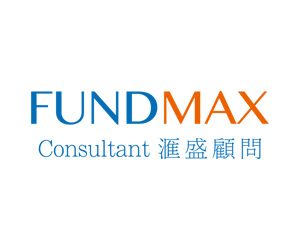Want to be in the loop?
subscribe to
our notification
Business News
SOCIO-ECONOMIC SITUATION IN SEVEN MONTHS OF 2016
The area of early summer-autumn rice ready for harvest reached 653.2 thousand hectares, up 8.1% over the same period last year. According to the preliminary report of provinces, summer-autumn rice productivity on the harvested area achieved about 5630–5680 kilograms per hectare, down 130-180 kilograms per hectare compared with the summer-autumn crop in 2015.
The cultivation of vegetables and crops in general was at low level. As of mid-July, provinces over the country planted 835 thousand hectares of maize, equaling 91.4% from the same period last year; 95 thousand hectares of sweet potato, equaling 88.7%; 54.5 thousand hectares of soya-bean, equaling 78.8%; 166.4 hectares of peanut, equaling 98%; 862.3 thousand hectares of vegetables, equaling 103.8%.
Cattle and poultry farming had no much change. The country’s flock of buffaloes in the month was estimated to reduce by 0.5-1% from the same period last year; flock of oxen increased by 1-1.5%; flock of pigs went up by 2.7-3.7%; flock of poultry raised by 3-3.5%. As of July 22, 2016, the whole country no longer had epidemic diseases in cattle and poultry.
+ Agricultural production as of July 15, 2016
b. Forestry
Generally, in seven months, the concentrated planted forest area was estimated to reach 120 thousand hectares, a rise of 1.7% compared to the same period last year; the number of separate planted trees gained 121.5 million trees, a decrease of 0.7%; wood production gained 4386 thousand m3, a rise of 10.9%; firewood production gained 17.3 million ster, an increase of 0.6%.
Generally, in seven months, damaged forest area was 2689 hectares, 2.3 times as high as it was in the same period last year, of which the burnt forest area was 1995 hectares, 2.8 times as high as the burnt area in the same period last year; destroyed area was 694 hectares, 1.6 times as high as it was in the similar period last year.
c. Fishery
Generally, in seven months, fishing production was estimated to reach 3745.6 thousand tons, increased by 2.1% over the same period last year, of which production of aquaculture gained 1963.3 thousand tons, up 1.2%; production of fishing caught achieved 1782.3 thousand tons, up 3.2% (Sea catching reached 1679.8 thousand tons, up 3.4%, of which the yield of tuna attained 13 thousand tons, equivalent to the yield in the same period in 2015).
2. Industry
Generally, in seven months of this year, Industrial Production Index (IPI) was increased by 7.2% from the same period last year, much lower than the growth of 10% in 2015’s similar period[1]. Of which the manufacturing climbed by 9.9%,
contributed 6.9 percentage points to the overall growth rate; the electricity power generation and distribution rose 11.6%, contributed 0.8 percentage points; the water supply and sewage treatment went up by 7%, contributed 0.1 percentage points; only the mining and quarrying fell by 2.7%, reduced 0.6 percentage points of the general growth rate.
Generally, in six beginning months of the year, consumption index for the manufacturing increased by 8% over the identical period in 2015 (13.1% increase in 2015’s same period). Stock index for the entire manufacturing as of July 01, 2016 went up by 9.2% from the same period last year (lower than the growth of 10.3% in 2015’s same period). Average stock rate of the whole manufacturing in six beginning months of 2016 was 70%.
The number of laborers working in industrial enterprises as of July 01, 2016 rose 5.3% compared to the same period last year, of which the State sector decreased by 0.9%; the non-State sector grew by 2.1%, and the FDI sector went up by 8.2%. As of above time, the number of laborers working in the mining and quarrying industry fell by 4.7% from the similar period last year; the manufacturing increased by 5.8%; the electricity power generation and distribution went down by 0.4%; the water supply and sewage treatment climbed by 2.2%.
+ Industrial production index
+ Main industrial products
+ Consumption and stock indexes of the manufacturing
+ Labor employed index (LEI) for industrial enterprises
3. Operation of enterprises[2]
Generally, in seven months of this year, the country had 64122 enterprises registered for new establishment with a total registered capital of 497 trillion dongs, an increase of 23.3% in the number of businesses and an increase of 54.7% in the registered capital against the same period in 2015[3]. The average registered capital per enterprise reached 7.7
billion dongs, up 25.4%. Besides, there were 894.9 trillion dongs of additionally registered capital of enterprises changed to raise the capital, bringing the total registered and additional capital to the economy in seven months of 2016 to 1391.9 trillion dongs.
The number of enterprises which finished the procedure for dissolving, terminating business activities in seven months was 6422 ones, increased by 17.7% from the same period last year (a decrease of 2.7% in 2015’s same period from 2014), of which there were 5987 businesses with a registered capital of less than 10 billion dongs, accounting for 93.2% and up 17.5%. By types of enterprise, of the total number of enterprises which finished the procedure for dissolving, terminating operations, there were 2591 single member limited liability companies (accounting for 40.3%); 1912 two-member limited liability companies (accounting for 29.8%); 1070 private businesses (accounting for 16.7%) and 848 joint-stock companies (representing 13.2%) and 01 partnership.
The number of enterprises having difficulty forced to temporarily cease operations in seven months of this year was 36206 ones, an increase of 11.9% over the identical period last year, of which 13656 enterprises registered for time-limited temporary cessation of operations, up 35.8% and 22550 enterprises suspended businesses waiting for closing the enterprise code or without registration, up 1.1%. Of the total enterprises having difficulty forced to temporarily cease operations with registration, there were 5101 single member limited liability companies (accounting for 37.4%); 4504 two-member limited liability companies (accounting for 33%); 2544 joint-stock companies (taking 18.6%) and 1507 private businesses (representing 11%). For enterprises suspended operation waiting for closing the enterprise code or without registration, there were 9300 single member limited liability companies (accounting for 41.2%); 7120 two-member limited liability companies (accounting for 31.6%); 4088 joint-stock companies (taking 18.1%) and 2042 private businesses (representing 9.1%).
4. Investment
Generally, in seven months of this year, estimated realized investment capital from the State Budget reached 131.2 trillion dongs, equaled 50.8% of the yearly plan and increased by 12.5% from 2015’s same period. Of which the capital under central management gained 30.4 trillion dongs, equaled 48.5% of the annual plan and went up by 18.3% from the same period last year; the capital under local management achieved 100.8 trillion dongs, equaled 51.5% of the yearly plan and grew by 10.9% over the similar period in 2015.
From the beginning of the year to July 20, 2016, FDI attracted 1408 newly licensed projects with the total registered capital of US$ 8695.2 million, up 31.8% in the number of projects and up 25.5% in the capital against the similar period in 2015. At the same time, there were 660 times of license-granted projects from the previous years which registered to raise capital with additional capital of US$ 4245.2 million. Thus, the total registered capital of both newly and additionally financed projects reached US$ 12940.4 million, grew by 46.9% against the last year’s same period. Realized FDI capital in seven months of this year was estimated to gain US$ 8.6 billion, rose 15.5% from 2015’s similar period.
In seven months of of this year, the manufacturing industry had the largest newly licensed FDI capital with US$ 5626 million, accounting for 64.7% of the total newly registered capital; the real estate business reached US$ 986.2 million, accounted for 11.3%; remaining industries achieved US$ 2083 million, accounted for 24%. If the additionally registered capital of license-granted projects from the previous years was included, the total FDI capital of the manufacturing in seven months of this year gained US$ 9121.8 million, accounted for 70.5% of the total registered capital; the real estate business achieved US$ 956.8 million, took 7.4%; remaining industries attained US$ 2861.8 million, represented 22.1%.
The country had 47 provinces and cities directly under the central management which received newly licensed FDI projects from 58 nations and territories in seven months of this year.
+ Realized investments under the State budget
+ Licensed FDI projects from January 01 to July 20, 2016
5. Government revenues and expenditures
Total estimated government revenues from the beginning of the year to July 15, 2016 achieved an estimate of 500.8 trillion dongs, equaled 49.4% of the annual estimate, of which domestic revenues reached 397.3 trillion dongs, equaled 50.6%; collecting from crude oil achieved 21.6 trillion dongs, equaled 39.6%; from export-import balance: 80.4 trillion dongs, equaled 46.8%. Of home revenues, 39.6 trillion dongs were from land use fee, equaling 79.2% of the annual estimate; 36.7 trillion dongs were from individual income tax, equaling 57.7%; 21.9 trillion dongs were from tax on environment protection, equaling 56.8%; 79.3 trillion dongs were from non-State industrial, commercial and non-state service taxes, equaling 55.3% of the yearly estimate; 79.1 trillion dongs were from FDI enterprises (excluding crude oil), equaling 49.7%. The collection from the State enterprises reached 98.3 trillion dongs, only equaling 38.4% of the yearly estate.
Total government expenditures from the beginning of the year to July 15, 2016 reached an estimate of 606.4 trillion dongs, equaling 47.6% of the yearly estimate. Of which, spending for development investment achieved over 89.4 trillion dongs, equaling 35% (only spending on capital construction reached 88.1 trillion dongs, equaled 34.9%); spending for economic and social development, national defense, public security, public administration (including salary reform expenditures) gained 435.5 trillion dongs, equaling 52%; repayment of debts and provision of aids gained 81.6 trillion dongs, equaling 52.6%.
6. Trade, prices, transport and tourism
a. Retail sales of consumer goods and services
Generally, in seven months of this year, total estimated retail sales of consumer goods and services reached 2016.9 trillion dongs, up 9.4% compared to the same period last year (If the price factor were excluded, the growth rate would be 7.4%, lower than the growth of 8% in 2015’s same period). By kinds of economic activity, retail sales of goods in seven months was estimated to gain 1535.2 trillion dongs, accounted for 76.1% of the total and increased by 9.7% against the same period last year.
Estimated sales of accommodation and catering services attained 230.4 trillion dongs, accounted for 11.4% of the total and up 7.5% from the same period last year. Sales of travelling in seven months of this year achieved an estimate of 18.5 trillion dongs, accounted for 0.9% of the total and up 9.5% against the same period last year. Sales of other services in seven months were estimated to achieve 232.8 trillion dongs, accounted for 11.6% of the total and went up by 9.4% from the same period in 2015.
+ Total retail sales of consumer goods and services
b. Exports, imports
Generally, in seven months of this year, export turnovers was estimated to reach US$ 96.83 billion, increased by 5.3% from the same period last year (if the price factor were excluded, the growth rate would be 9.5%), of which the domestic economic sector achieved US$ 27.93 billion, increased by 2.4%; the FDI sector (including crude oil) gained US$ 68.90 billion, grew by 6.5%.
About the export market in seven months, the United States was still the biggest export market of Vietnam with an export turnover of US$ 21.3 billion, a rise of 13% compared to 2015’s same period. Followings were EU with US$ 19.1 billion, a rise of 9.2%; China with US$ 10.7 billion, up 13.7%; South Korea with US$ 6 billion, a rise of 37%. Only exporting to the ASEAN market reached US$ 9.5 billion, a decrease of 12.6%; and to Japan gained US$ 7.9 billion, 0.9% decline.
Generally, import turnovers in seven reached an estimate of US$ 95.03 billion, down 0.9% from the similar period last year (if the price factor were excluded, it would be at an increase of 7.4%), of which the domestic economic sector gained US$ 39.63 billion, 1.2% growth; the FDI sector achieved US$ 55.40 billion, a decline of 2.4%.
About the import market in seven months of this year, import turnovers from some markets mainly went down compared with the same period last year, of which importing from China reached US$ 27.4 billion, down 3.1%[4]; from
ASEAN: US$ 13.4 billion, down 4.1%; from Japan: US$ 8.2 billion, down 4.1%; from EU: US$ 5.9 billion, down 1.3%. Only importing from South Korea in seven months achieved US$ 17.4 billion, up 6.5%; from the United States: US$ 4.5 billion, up 0.2%.
Generally, in seven months, trade surplus was US$ 1.8 billion, of which the domestic economic sector had a trade deficit of US$ 11.7 billion; the FDI sector (including crude oil) had a trade surplus of US$ 13.5 billion.
+ Exports
+ Imports
c. Consumer price indexes (CPI), gold and US dollar price indexes
Average CPI in seven months of this year went up by 1.82% compared to 2015’s identical period. Average core inflation in seven months rose 1.81% against the similar period in 2015.
Gold price index grew by 10.99% from the same period last year. US dollar price index rose 2.21% compared to 2015’s similar period.
+ Consumer price indexes, gold, US dollar price indexes and core inflation in July 2016
d. Carriage of passengers and cargos
Passenger carriage in seven months of 2016 was estimated to reach 2110.5 million passengers, raised by 9.5% and 98.9 billion passengers-kilometers, by 9.7% from the same period last year. Of which passengers carried by road achieved 1981.8 million passengers, a rise of 9.7% and 66.4 billion passengers-kilometers, a rise of 8.1%; by airway: 23 million passengers, an increase of 26.7% and 28.4 billion passengers-kilometers, an increase of 15.8%; by railway: 6.2 million passengers, a drop of 4.9% and 2.3 billion passengers-kilometers, a decline of 7%; by seaway: 3.5 million passengers, 4.2% increase and 178.1 million passengers-kilometers, 2.8% growth.
Cargo carriage in seven months reached 722.7 million tons, up 8.5% and 138.6 billion tons-kilometers, up 3.4% from the last year’ same period. Of which the domestic transport gained 703.6 million tons, increased by 8.7% and 62.9 billion tons-kilometers, by 5.8%; overseas transport reached 19.1 million tons, grew by 2.3% and 75.7 billion tons-kilometers, by 1.5%. Cargo transport by road obtained 561.3 million tons, up 9.8% and 34 billion tons-kilometers, up 12.7% from the same period last year; by waterway: 123.8 million tons, up 5.5% and 25.6 billion tons-kilometers, up 4.8%; by seaway: 34.4 million tons, up 2.3% and 76.8 billion tons-kilometers, down 0.1%; by railway: 3 million tons, a decline of 22.1% and 1.8 billion tons-kilometers, down 22.2%.
+ Carriage of passengers and cargos
e. International visitors to Vietnam
Generally, in seven months of this year, international visitors to Vietnam was estimated to reach 5552.6 thousand arrivals, up 24% from the same period last year, of which visitors coming by airway gained 4659.9 thousand arrivals, up 28.7%; by road: 806.4 thousand arrivals, up 8.2%; by seaway: 86.3 thousand arrivals, down 22.4%.
In seven months of this year, visitors to Vietnam from Asia achieved 3966.8 thousand arrivals, increased by 29.5% against the similar period last year. Visitors from Europe gained an estimate of 900.6 thousand arrivals, went up by 14.1% from the last year’s identical period. Visitors from America obtained 450.8 thousand arrivals, rose 12.5% over the same period last year.
+ International visitors to Vietnam
7. Social issues
a. Farmers’ food shortage
Generally, in seven months of 2016, the country had 234.4 thousand times of households suffering from food shortage, up 24.7% compared to the similar period last year, corresponding to 971.3 thousand persons suffering from food shortage, up 25.2%. To overcome this problem, from the beginning of the year, all administrative levels, sectors and organizations from central to local level provided difficult families with 15.4 thousand tons of grain food and 590 million dongs.
b. Epidemic diseases and food poisoning
Generally, in seven months, the country had over 18.6 thousand cases of hand, foot, mouth disease; 44.9 thousand cases of hemorrhagic fever (14 died); 157 cases of typhoid; 413 cases of virus encephalitis (05 died); 32 cases of meningococcal disease (05 died).
In the month, 982 HIV-infected cases were found, bringing the total number of alive HIV-infected persons over the country as of July 17, 2016 to 228.9 thousand persons, of which 86.3 thousand cases turned to AIDS. The number of persons died of HIV/AIDS over the country as of above time was 87.9 thousand persons.
From December 17, 2015 to July 17, 2016, the country had 72 serious cases of food poisoning, infecting 2411 persons, of which 06 cases died.
c. Traffic accidents
Generally, in seven months of this year, the country had 11852 cases of traffic accidents, including 5825 cases of traffic accidents and 6027 cases of traffic crashing, killing 5023 persons, injuring 3321 persons and injuring slightly 6965 others. In comparison with the same period last year, cases of the traffic accidents in seven months of 2016 decreased by 8.2% (cases of traffic accidents less serious and more reduced by 2%; cases of traffic collision by 13.5%); the death fell by 2.8%; the injured persons declined by 1.7%; and slightly injured persons decreased by 15.7%. On average, each day in seven months of 2016, the country had 55 cases of traffic accident, including 27 cases of traffic accidents and 28 cases of traffic crashing, killing 24 persons and injuring 16 persons and injuring somewhat 33 persons.
d. Damage by natural calamity
Generally, in seven months, natural calamity made 50 persons died and 129 persons injured; over 1000 houses collapsed, swept away and 36.3 thousand houses blown off, unroofed; 27 thousand hectares of rice, 18.3 thousand hectares of vegetables and crops, and 2000 hectares of aquaculture damaged; 17 thousand heads of cattle, 13.3 thousand fowls and over 730 tons of fishery died. The total value of damage caused by the disaster in seven months of 2016 was estimated nearly 1.5 trillion dongs.
e. Fire and explosion, environment protection
Generally, in seven months of 2016, authorities found 8756 cases of violating regulations of environment protection over the country, of which 3853 cases were treated with total fine of over 405 billion dongs.
Generally, in seven months of 2016, the country had 2028 cases of fire and explosion, killing 56 persons and injuring 208 others, the value of damage was estimated about 940 billion dongs.
GENERAL STATISTICS OFFICE
[1] IPI in July 2015 increased by 10% over 2014’s same period, of which the mining and quarrying rose 8.7%; the manufacturing grew by 10.4%; the electricity power generation and distribution went up by 11.4%; the water supply and sewage treatment climbed by 6.5%.
[2] Source: National Business Registration System, Ministry of Planning and Investment (MPI).
[3] Compared with the same period in 2014, the number of enterprises registered for new establishment in July 2015 increased by 22.7%; the registered capital rose 22.4%.
[4] Trade deficit with China in seven months of 2016 was estimated to be US$ 16.7 billion, down 11.5% from the same period in 2015.
Related News

VIETNAM’S GDP TO GROW 5.5% THIS YEAR – WB
This forecast is based on the assumption of a moderate recovery in manufacturing exports in 2024, fueled by rebound growth of 8.5% year-on-year in the fourth quarter of 2023 and 17.2% year-on-year in the first quarter of 2024, reflecting strengthening global demand, said Dorsati Madani, senior country economist at the WB in Vietnam.

FARE REFUND FOR VISA REJECTION
Cathay Pacific will offer full refunds for cases of visa rejection to provide you with the confidence to explore the world with ease. If you are planning to fly to a destination that requires an entry visa, you can now book with greater peace of mind.

FOUR COMMODITIES POST Q1 EXPORT VALUE OF OVER 5 BILLION USD
The total export turnover of agricultural, forestry, and fisheries products in the first three months of 2024 is estimated to reach 13.53 billion USD, an increase of 21.8% compared to the same period of 2023.

MOIT PROPOSES SCHEME TO BOOST RENEWABLE ENERGY PROCUREMENT
The proposed Direct Power Purchase Agreement (DDPA) mechanism, outlined in the draft decree, targets organisations and individuals consuming electricity from the 22kV power grid or higher, with a monthly consumption averaging 500,000kWh. However, residential households are excluded from direct procurement.

REAL ESTATE BONDS PLACE PRESSURE ON ISSUING FIRMS
The ministry’s recent report underscores concerns within Vietnam’s corporate bond market for 2023 and 2024. It emphasizes the critical need to address hindrances to the real estate sector in line with the objectives provided in Government Resolution No. 33/NQ-CP, which aims to stabilize the industry.

DA NANG CUSTOMS FOCUSES ON DEVELOPING CUSTOMS-BUSINESS PARTNERSHIPS
Da Nang Customs Department issued an action plan for developing customs-business partnership in 2024. One of the new events this year is the workshop on “Settlement reports for enterprises engaged in outsourcing, export production and export processing” held in Da Nang Customs Department on April 16, 2024.

































